Key takeaways
- Campaigns are complex systems that balance emotional connection with strategic messaging to build trust with voters.
- Buttigieg’s strategy utilized micro-targeting and digital engagement, focusing on personal anecdotes to humanize his campaign.
- Effective messaging was clear and adaptable, resonating with different demographics while maintaining a genuine narrative.
- Voter engagement emphasized meaningful connections through intimate gatherings and online communities, fostering a sense of belonging among supporters.
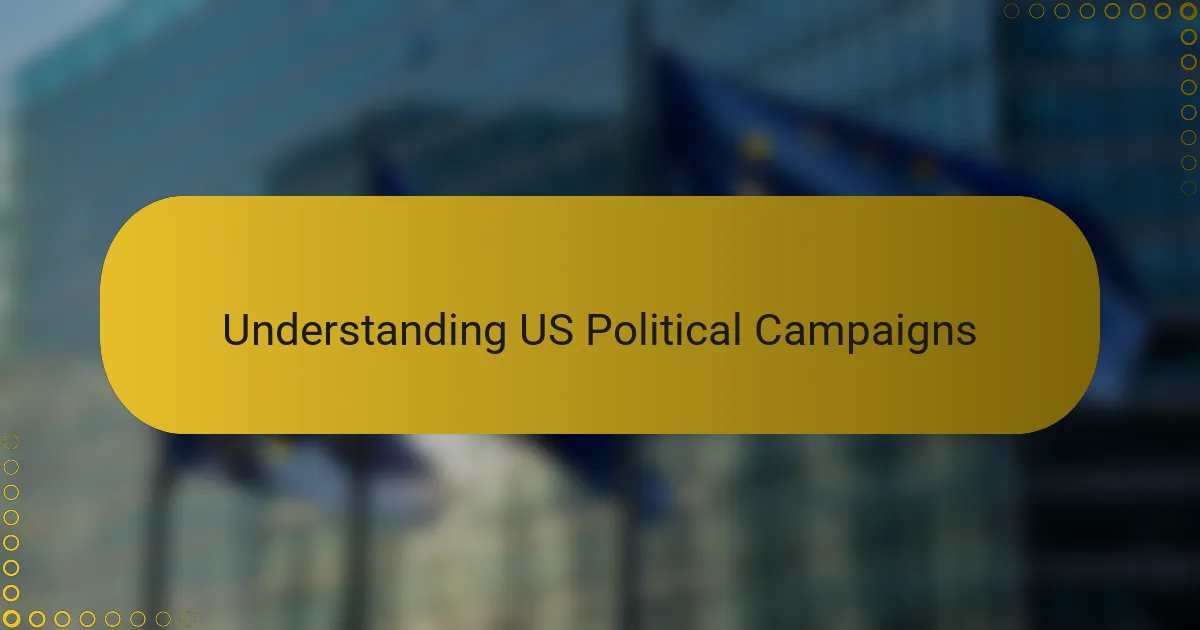
Understanding US Political Campaigns
Understanding US political campaigns means recognizing they are more than just flashy ads and speeches. From my experience, campaigns are complex machines fueled by strategy, data, and relentless outreach. Have you ever wondered why some candidates seem to connect emotionally while others just deliver facts? That’s no accident—it’s by design.
What’s fascinating is how campaigns balance national issues with local concerns. I remember following several statewide races where candidates tailored messages block by block, knowing that one size simply doesn’t fit all in the US. It’s a dance between broad appeal and personal connection, which can make or break a campaign.
At their core, campaigns aim to build trust and momentum over time—a continuous conversation with voters. They ask, “Why should you care?” and seek to answer it in ways that resonate. Understanding this helps me appreciate the effort behind every rally attendance figure or poll update, revealing the human dynamics beneath the politics.
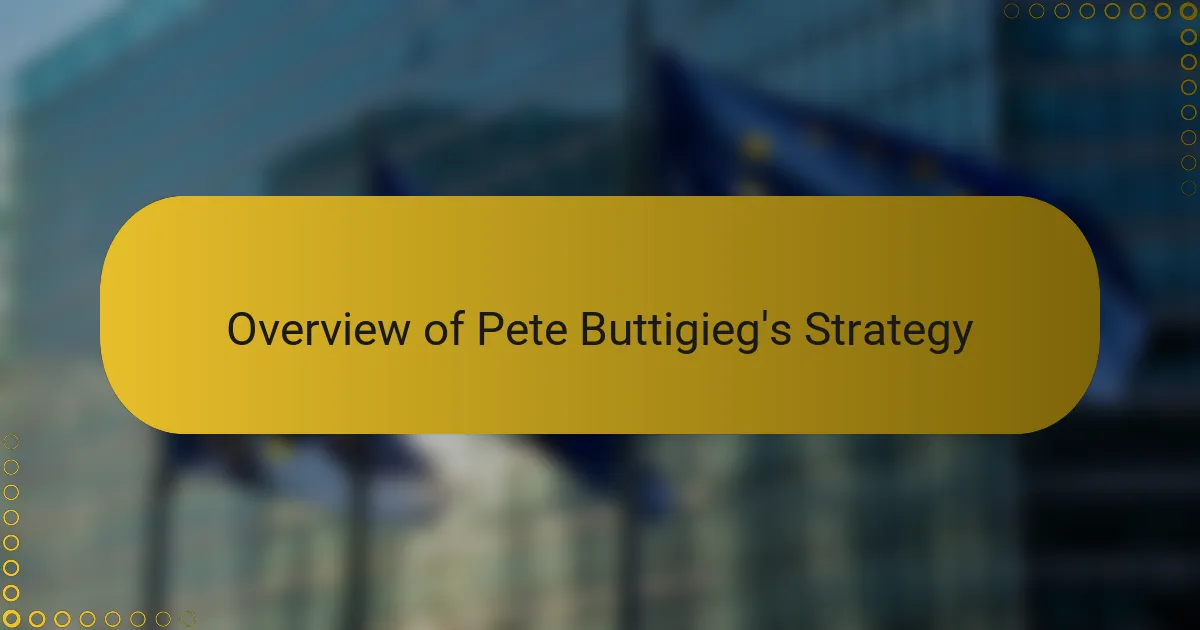
Overview of Pete Buttigieg’s Strategy
Pete Buttigieg’s campaign strategy struck me as uniquely calculated yet refreshingly sincere. He leaned heavily on a narrative of generational change and competence, positioning himself as both an outsider and pragmatist. Have you noticed how his focus on Midwestern roots and policy detail created a blend that felt both relatable and substantive?
What I find compelling is his use of data combined with grassroots momentum. Rather than pouring all resources into big, flashy events, his team targeted specific demographics and regions, almost like playing political chess. It made me think about how precision, not just passion, shapes success in campaigns.
Buttigieg also relied heavily on storytelling, sharing personal anecdotes and struggles that humanized him beyond the usual political script. That approach often made me wonder—does vulnerability in politics build trust, or risk undermining authority? In his case, it seemed to open doors rather than close them.
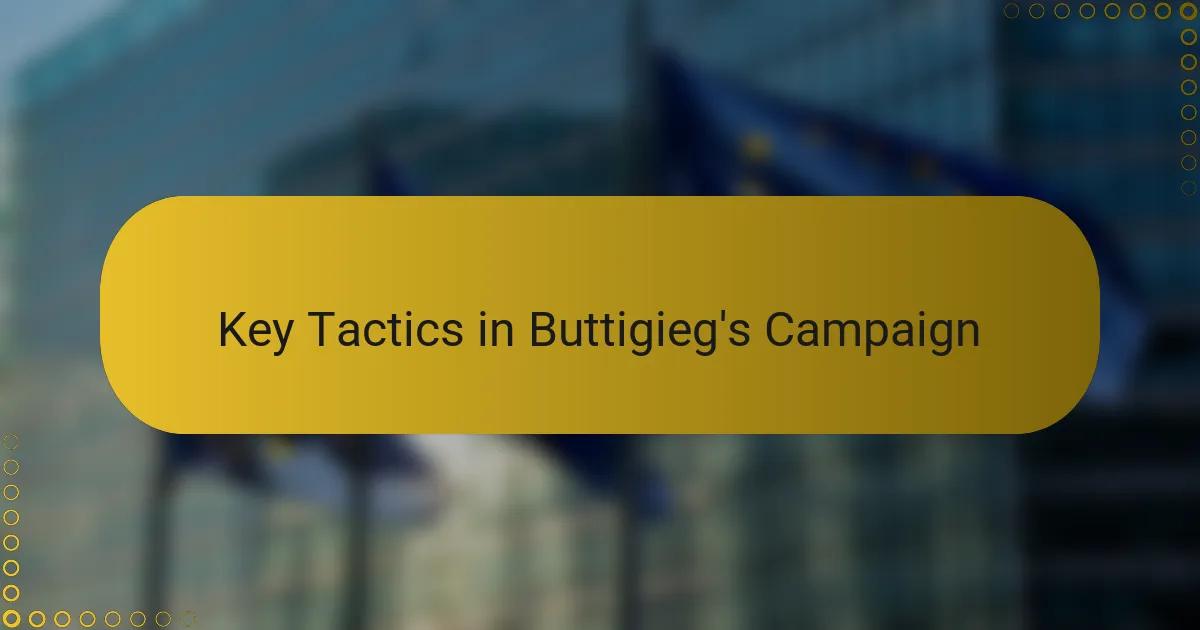
Key Tactics in Buttigieg’s Campaign
One tactic that stood out to me was Buttigieg’s emphasis on micro-targeting. His team zeroed in on specific neighborhoods and voter groups, tailoring messages that felt personal rather than generic. I recall thinking how smart that was—especially in an age where people expect politicians to understand their unique concerns, not just spout broad slogans.
Another key move was his mastery of digital engagement. He wasn’t just relying on traditional rallies; Buttigieg’s campaign created online spaces where supporters could connect and mobilize easily. From my perspective, this adaptability showed a sharp understanding of how modern voters interact and get involved.
Buttigieg’s ability to blend data-driven decisions with heartfelt storytelling also caught my attention. It made me ask myself, can a candidate truly be both analytical and empathetic? In this case, the answer seemed clear—yes. His stories added warmth to the numbers, making the campaign feel more human and relatable, which is often a rare balance to strike.
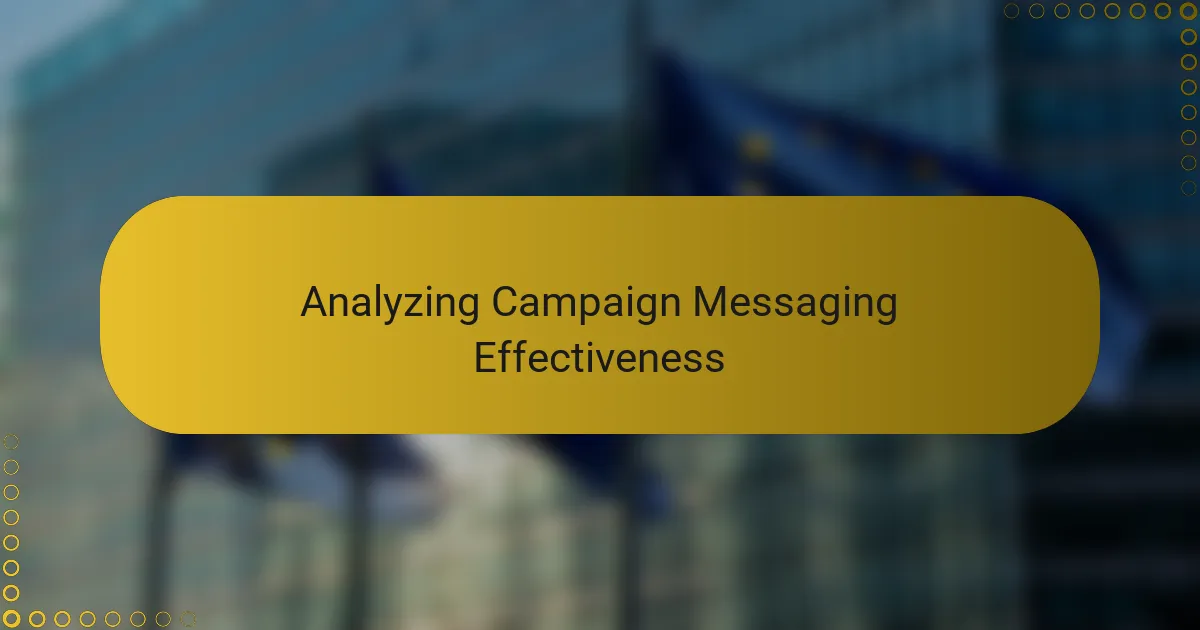
Analyzing Campaign Messaging Effectiveness
What really struck me about Buttigieg’s campaign messaging was its clarity and consistency. Each message seemed carefully crafted to reinforce his identity as a pragmatic reformer without sounding robotic. Have you ever noticed how repeating a core idea, but in different ways, can make a message stick? That’s exactly what his team achieved in my view.
Still, messaging effectiveness goes beyond just repetition. I was impressed by how his campaign adapted language and tone depending on the audience—more hopeful and visionary for young voters, more detailed and policy-focused for older ones. It made me realize how important it is to listen as much as to speak in politics.
Yet, I wonder if sometimes this strategic tailoring risks diluting authenticity. Does tailoring risk losing the candidate’s true voice? With Buttigieg, I felt the balance mostly worked because his underlying narrative—bridging generational divides—was genuine and well rooted in his personal story. That’s the kind of messaging that, in my experience, really connects.
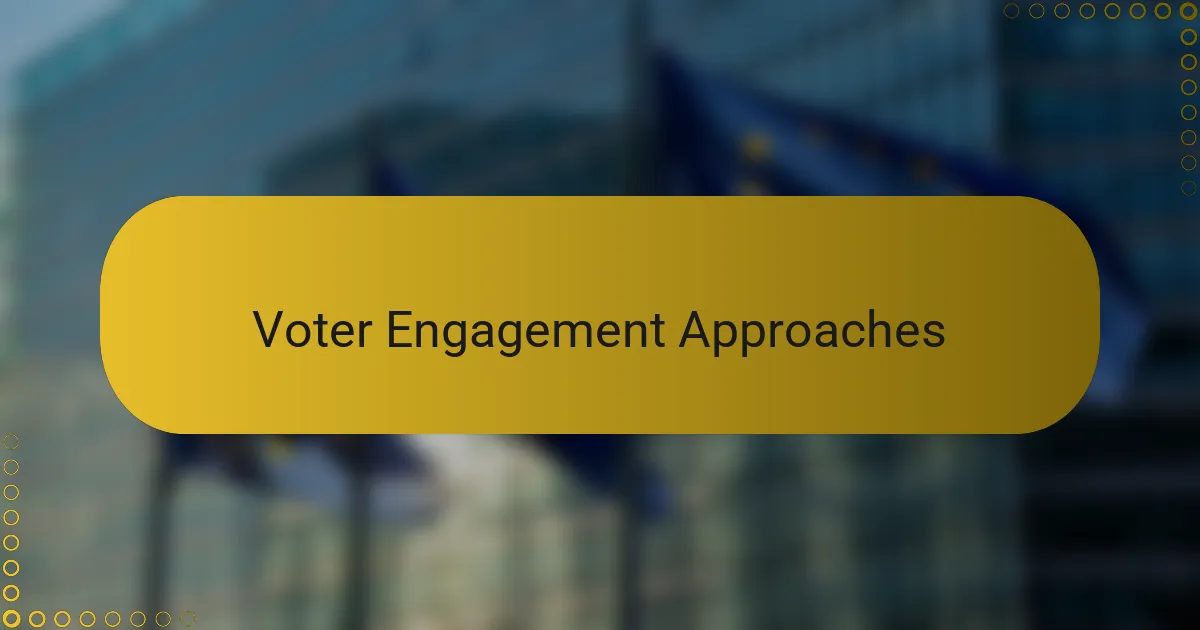
Voter Engagement Approaches
Engaging voters was clearly a cornerstone of Buttigieg’s approach, and I appreciated how his team didn’t just chase raw numbers but aimed for meaningful connections. I remember watching how they organized intimate town halls and listening sessions, creating spaces where voters felt heard rather than preached to. Doesn’t that feel like the kind of engagement we long for in politics—real conversations instead of scripted soundbites?
What intrigued me further was his savvy use of digital tools to deepen involvement. It wasn’t just about broadcasting messages but fostering communities online where supporters could share ideas and volunteer. From what I’ve seen, this strategy resonates powerfully with younger voters, who crave both participation and belonging.
Yet, I also wondered—can you sustain that kind of intensive outreach over time without burning out activists or losing authenticity? Buttigieg’s campaign seemed aware of this challenge, pacing efforts to maintain energy and trust. To me, that balance between enthusiasm and respect for voter capacity says a lot about thoughtful voter engagement.
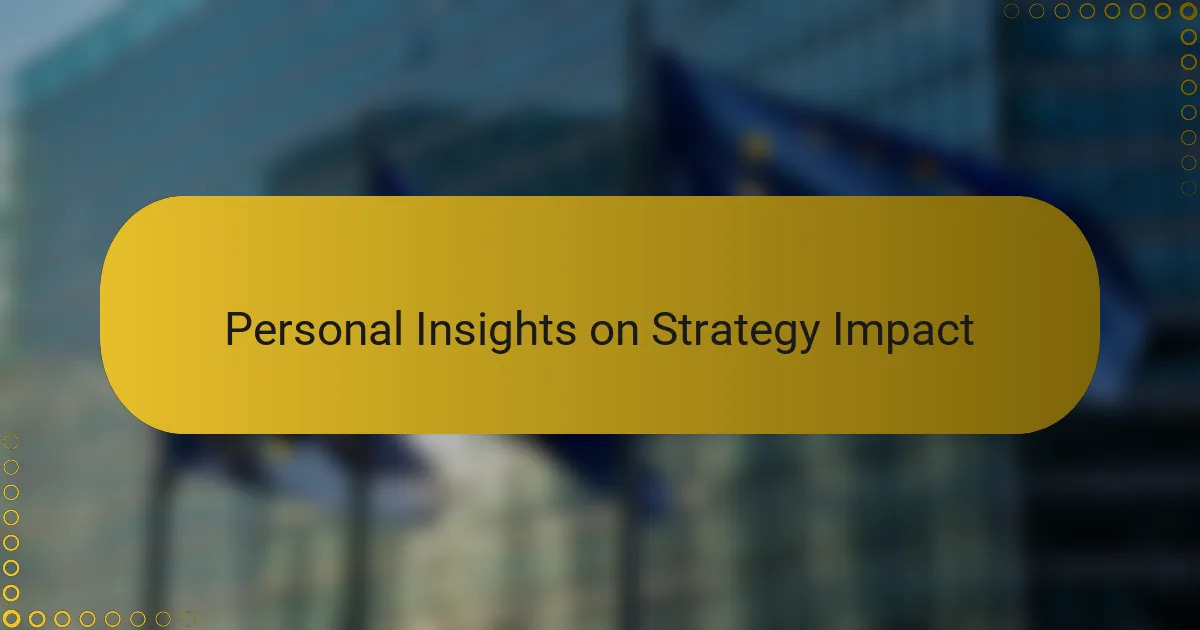
Personal Insights on Strategy Impact
What really impressed me about Buttigieg’s strategy was how it translated into tangible momentum rather than just buzz. I recall a moment during a local event where the enthusiasm felt genuine, not manufactured—a sign that his outreach was hitting the right emotional chords. Have you ever experienced that subtle but unmistakable energy shift when a campaign truly connects? That’s the impact of well-crafted strategy in action.
At the same time, I sometimes wondered if the data-driven, micro-targeting approach could risk creating echo chambers. Does zeroing in so precisely on specific groups limit a campaign’s ability to inspire broader coalitions? From what I observed, Buttigieg’s narrative helped bridge that gap, but it made me think about the delicate tension between precision and inclusivity in political strategy.
Ultimately, the personal stories Buttigieg shared played a big role in softening the edges of a calculated campaign. In my experience, this blend of intellect and vulnerability makes voters not just notice a candidate, but relate to them on a human level. That’s where strategy moves beyond tactics to build lasting trust.